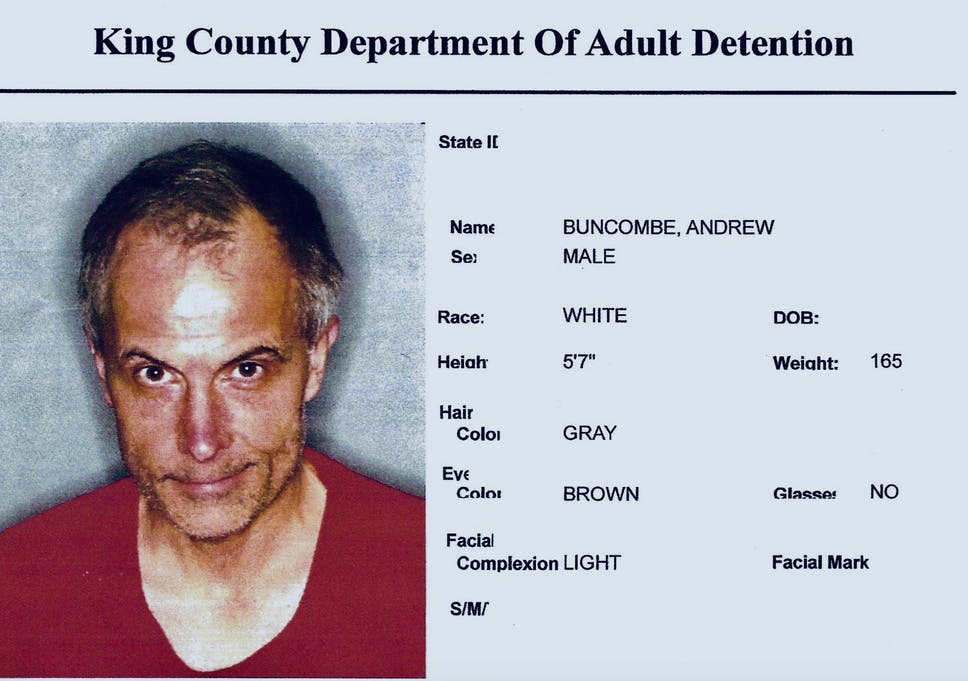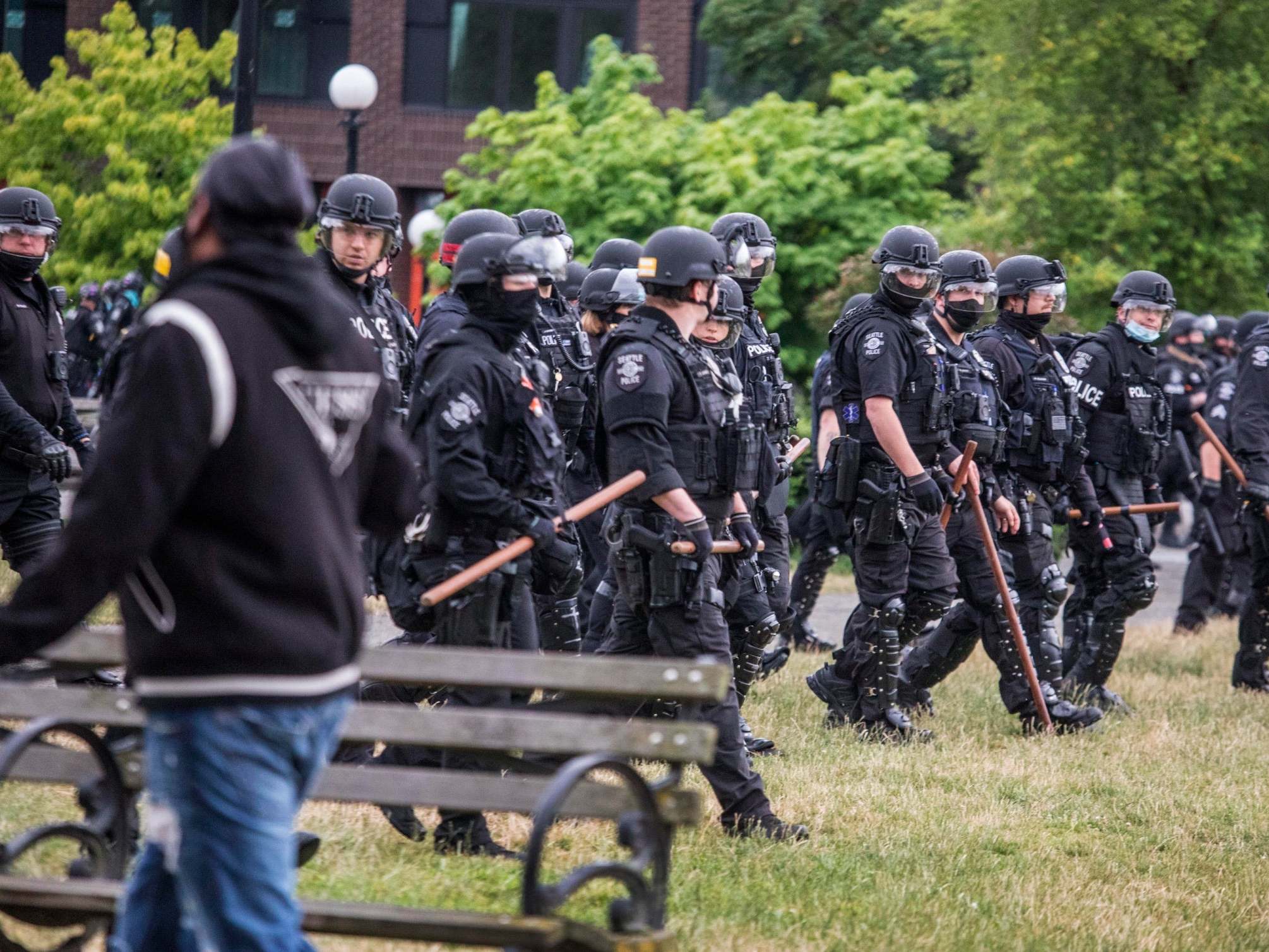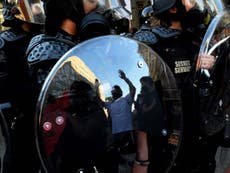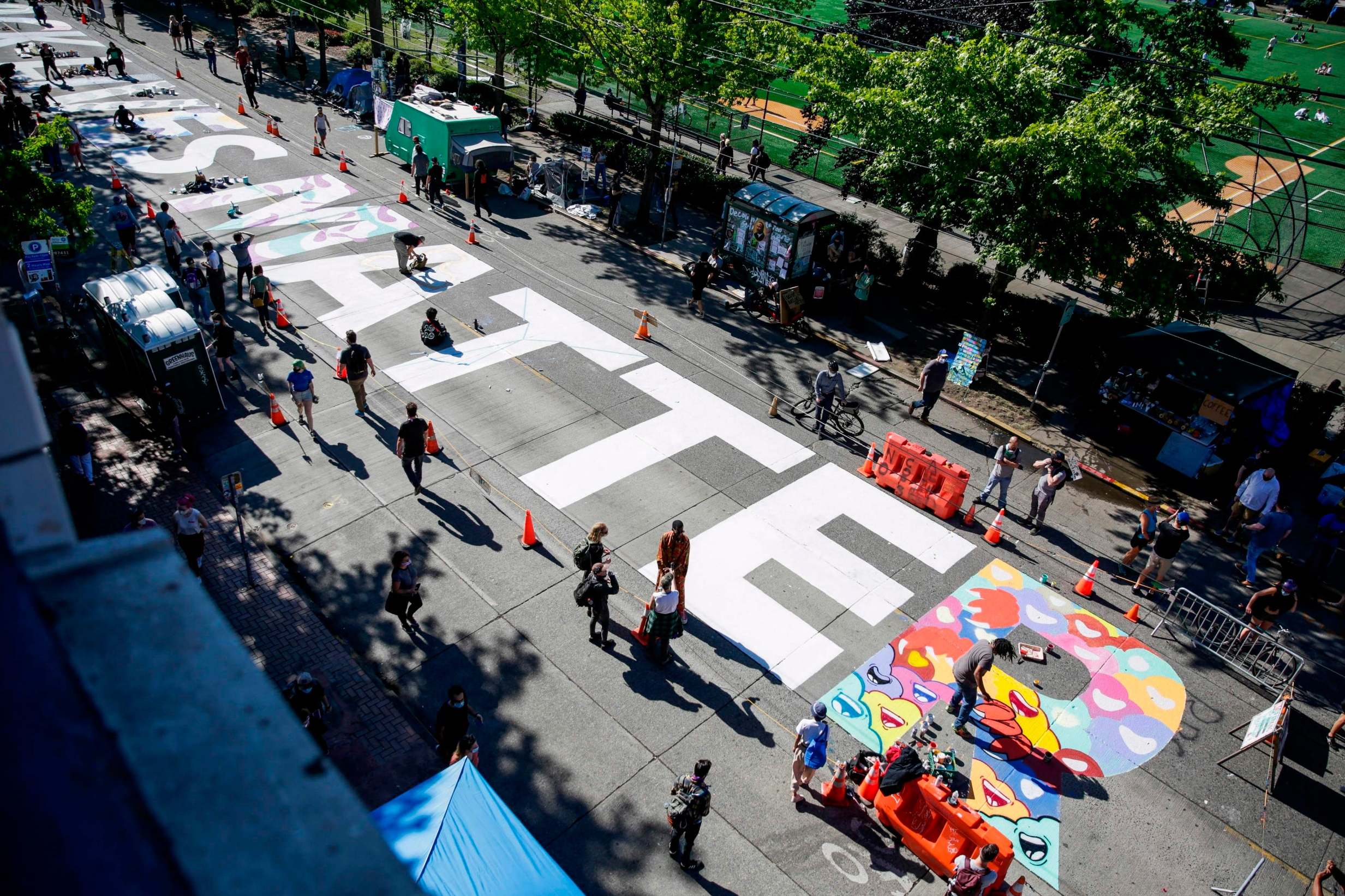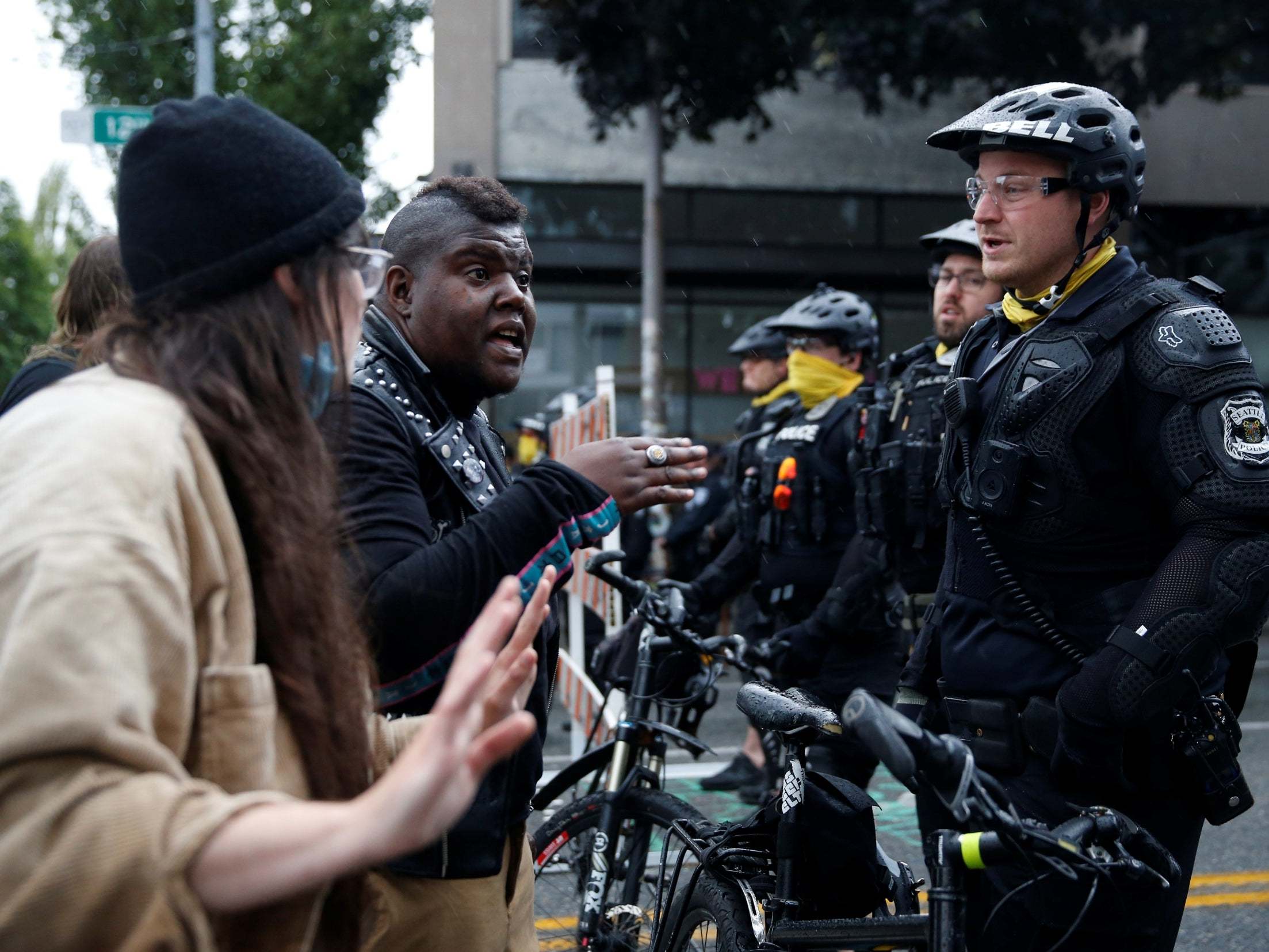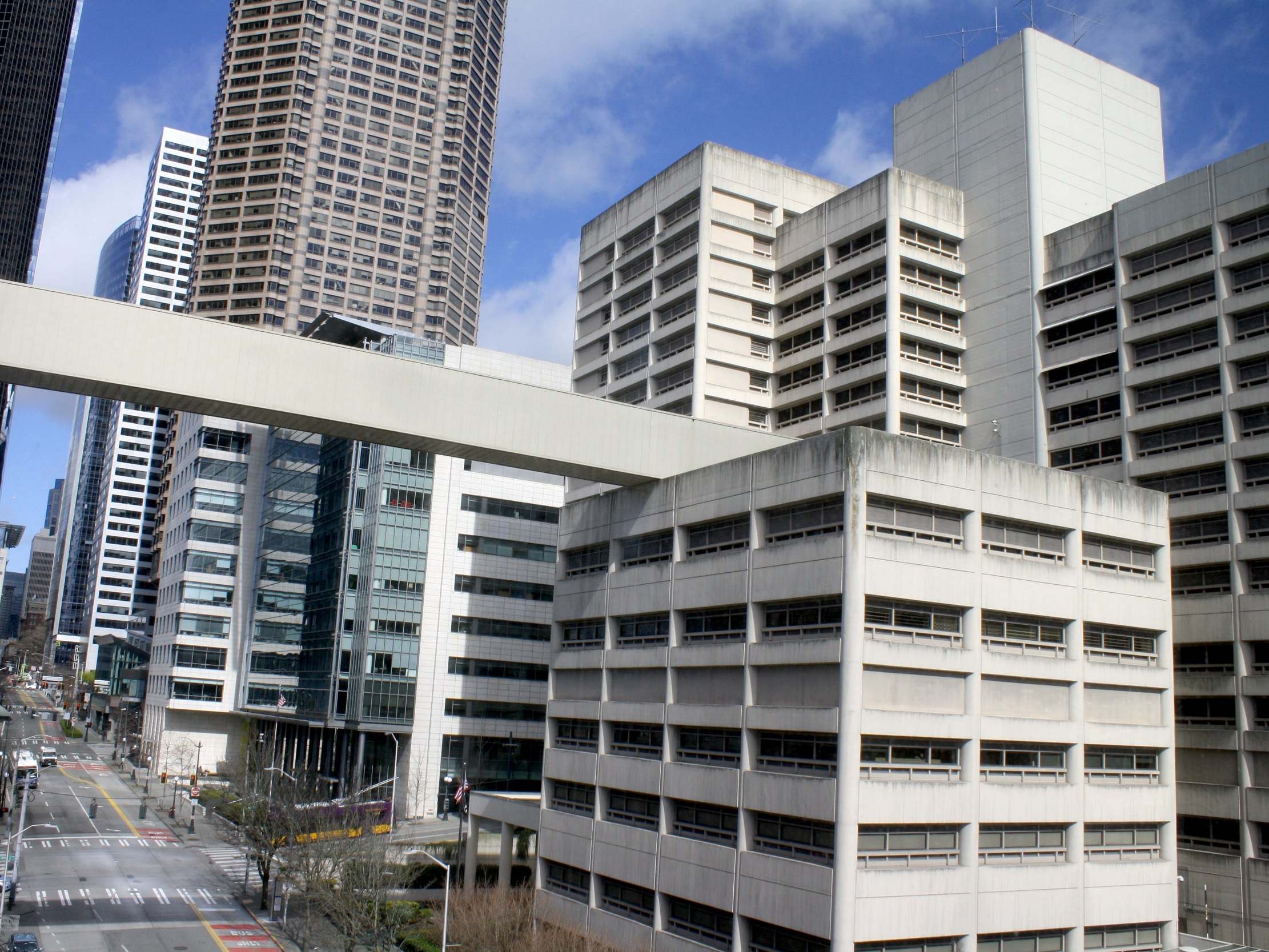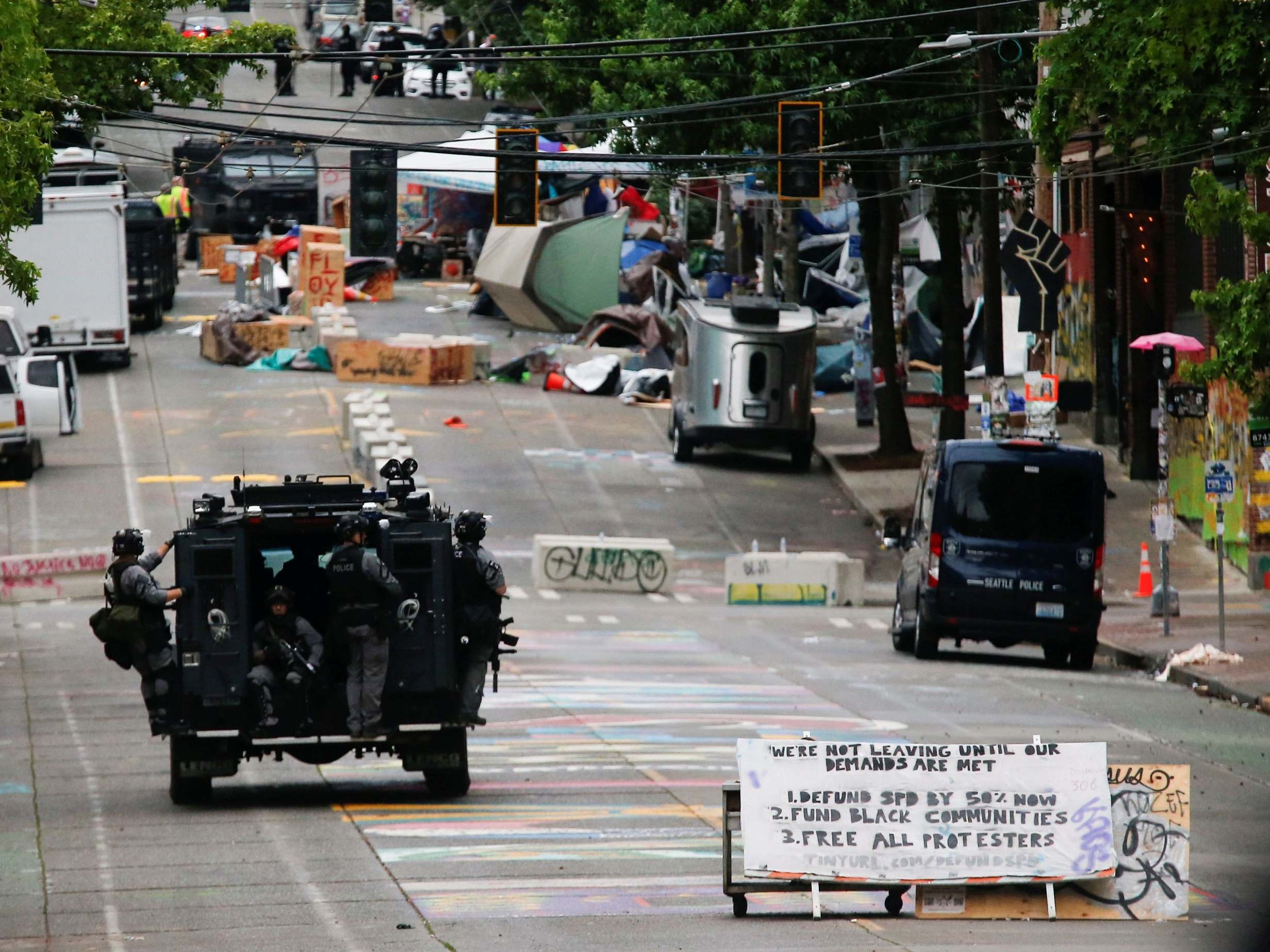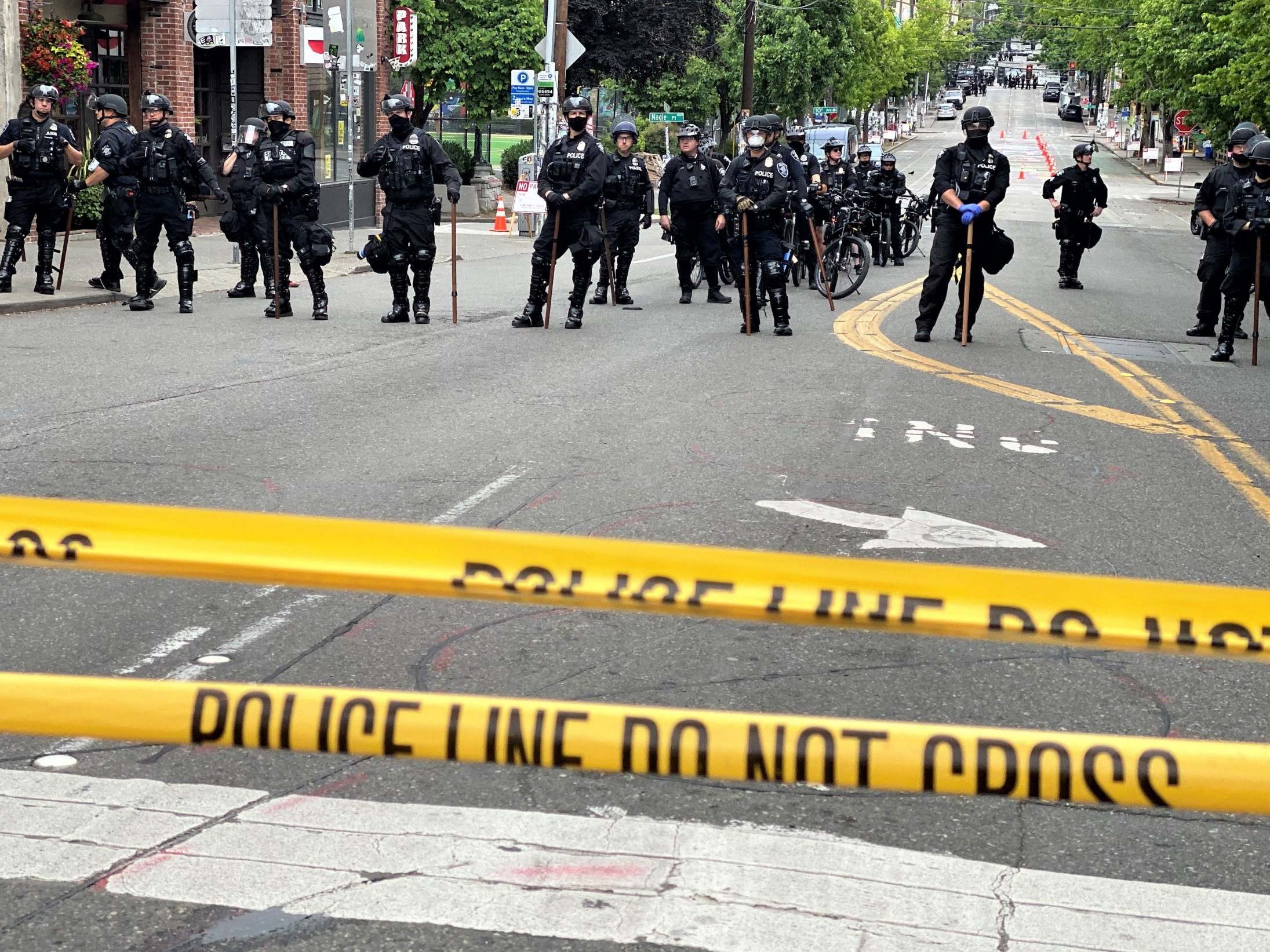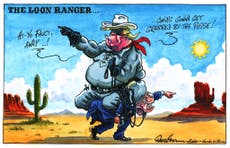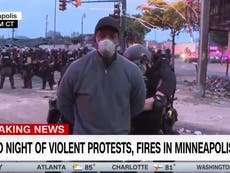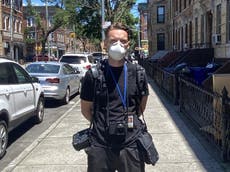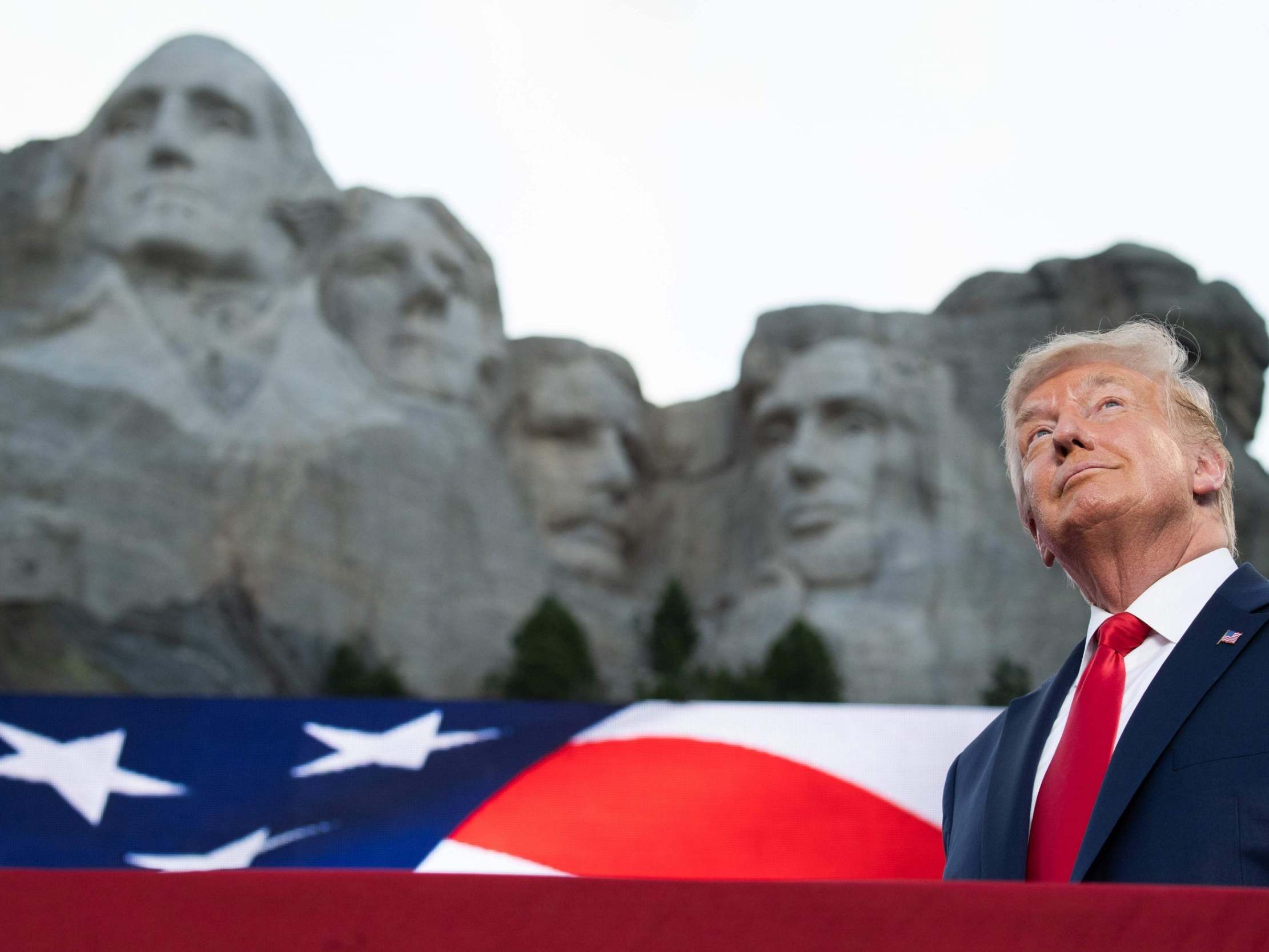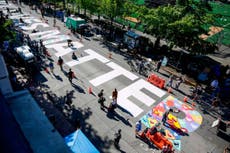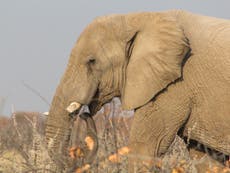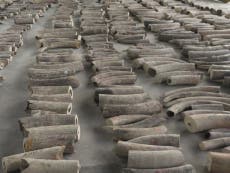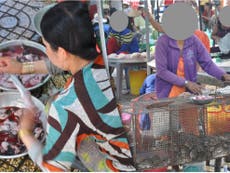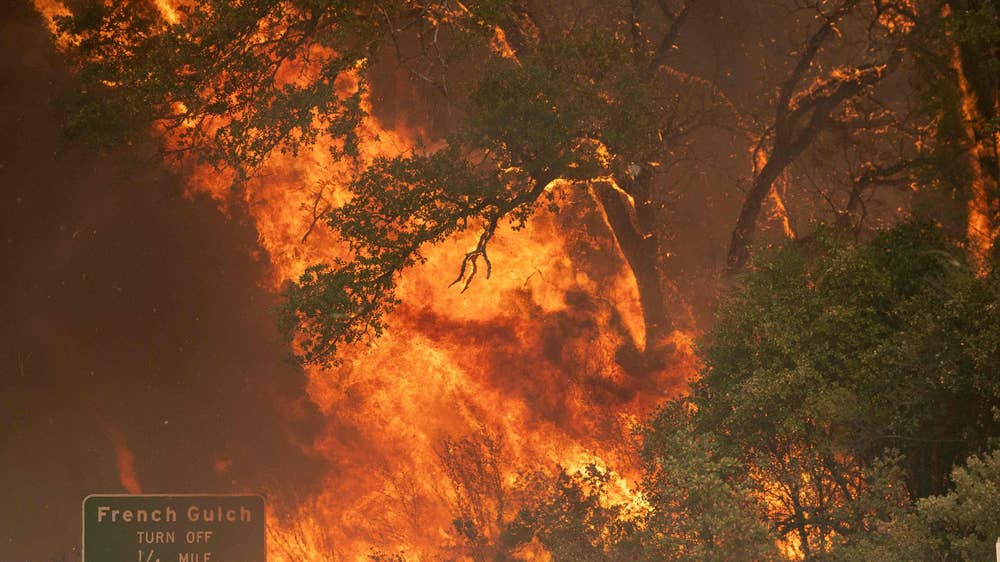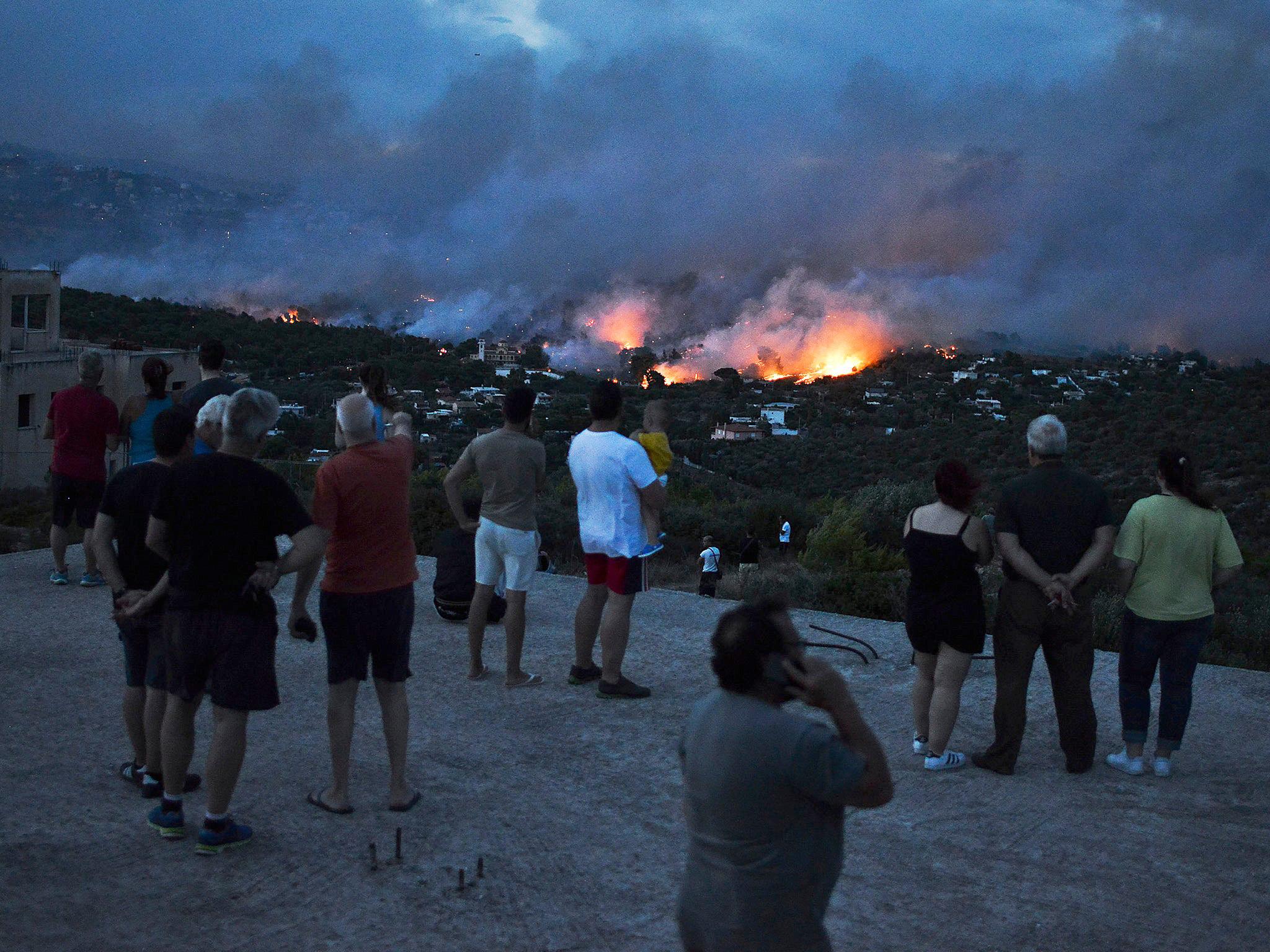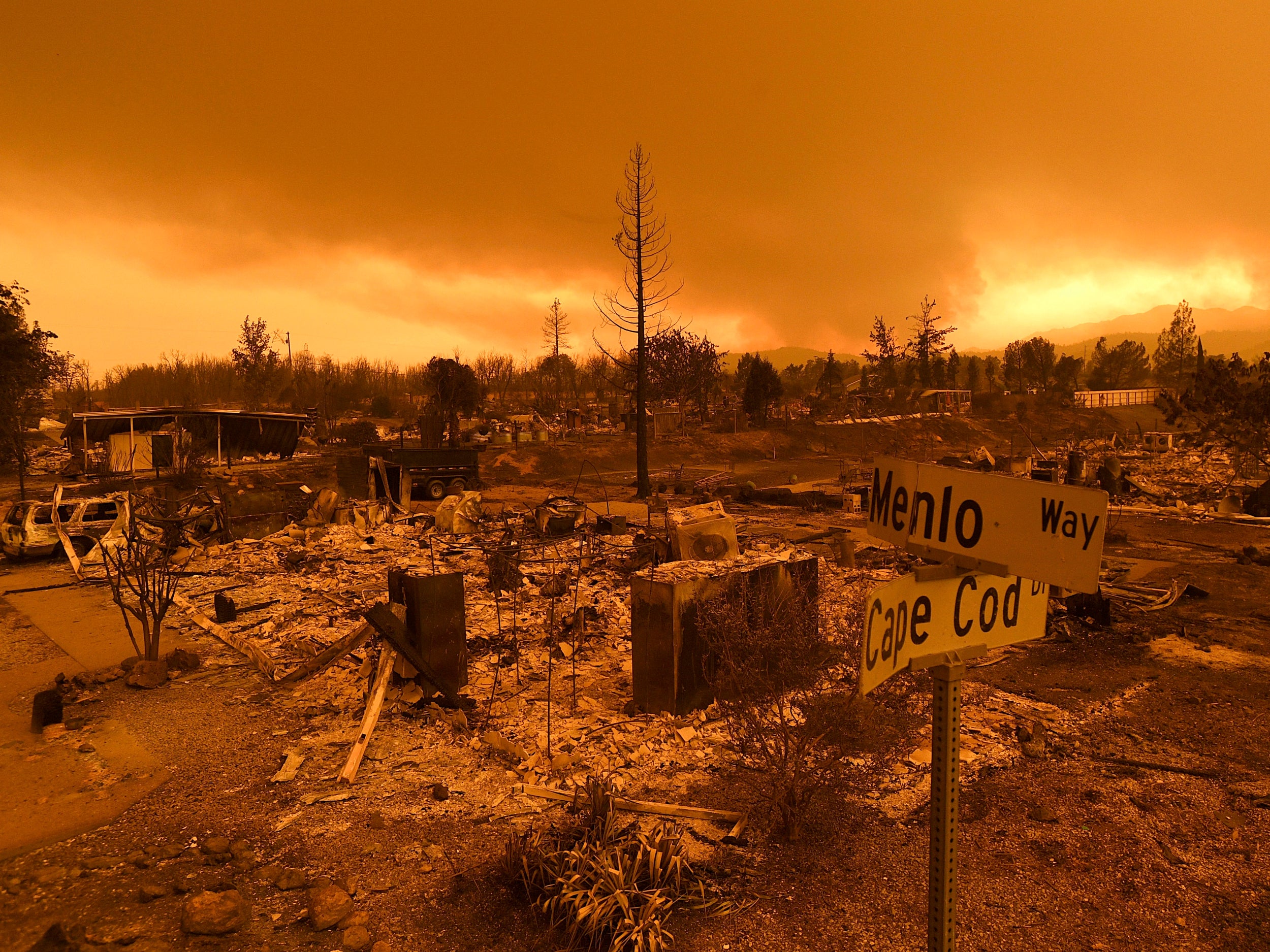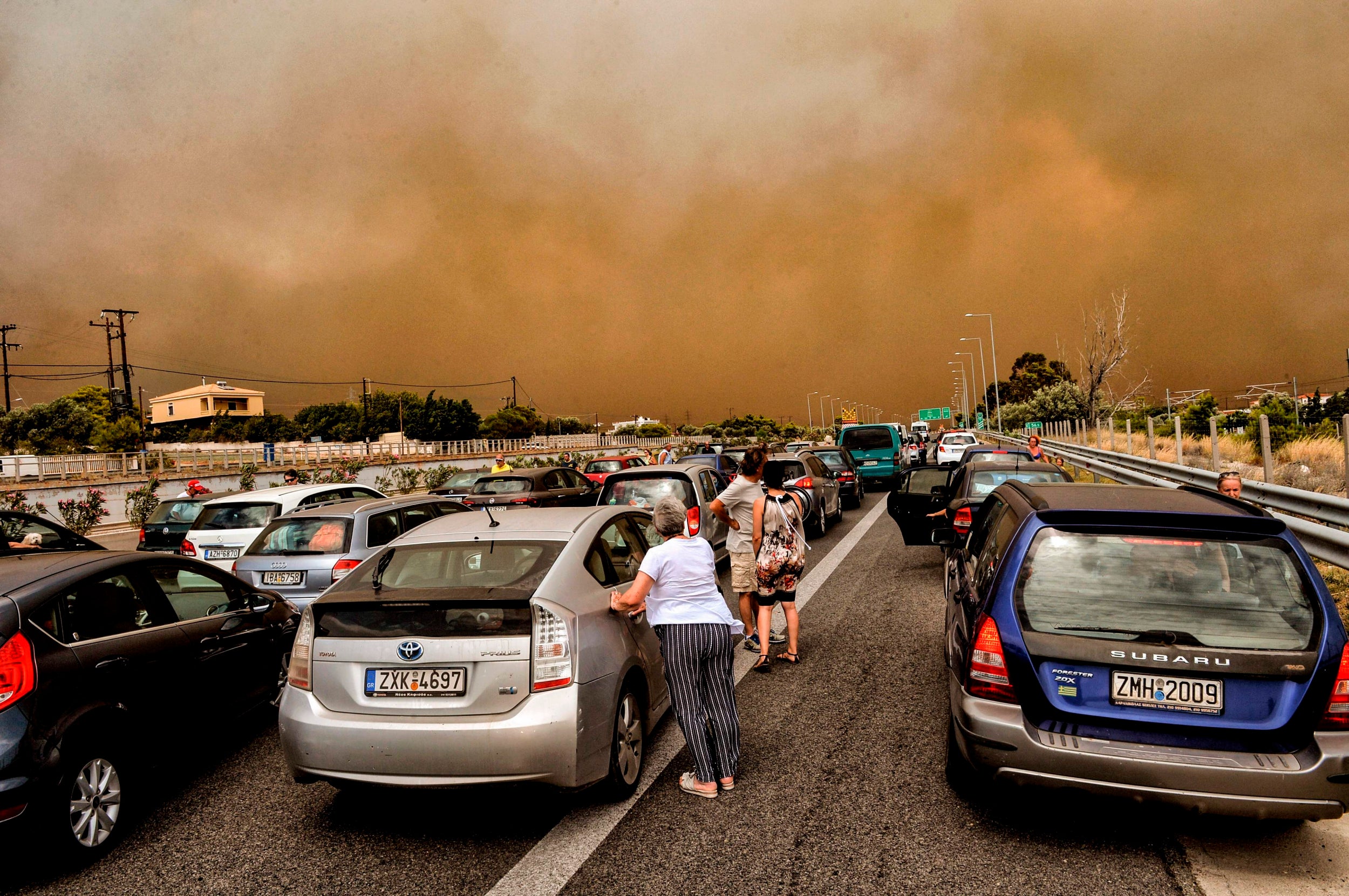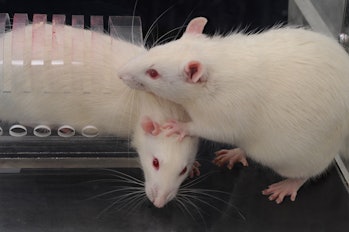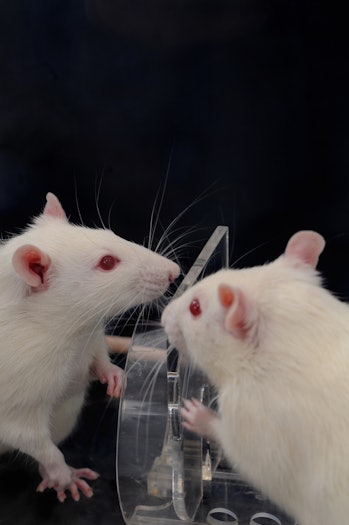Seattle’s CHAZ: Inside the occupied vegan paradise – and Trump’s ‘ugly anarchist’ hell
‘The president’s claims, as usual, are false’
‘The president’s claims, as usual, are false’
Andrew Buncombe Seattle Friday 12 June 2020
IS THIS WHY COPS BUSTED INDEPENDENT REPORTER ANDREW BUNCOMBE
https://plawiuk.blogspot.com/2020/07/i-was-arrested-jailed-and-assaulted-by.html
https://plawiuk.blogspot.com/2020/07/i-was-arrested-jailed-and-assaulted-by.html
There were activists with bullhorns, and artists painting designs on the street.
Stalls collected donations for the homeless and others offered vegan curry. There were people posing for images in front of a boarded-up police station, while others sat on the grass. There were people of colour, and there were white people, lots of white people.
But the “ugly anarchists” denounced by Donald Trump on Twitter that very morning? Could it be they existed only in his imagination?
The Capitol Hill Autonomous Zone, six city blocks close to the centre of Seattle that has become the focus of a protest in the wake of the death of George Floyd, may be many things. Yet an attempt to take over, or occupy the city it is not.
“I think that is a ridiculous circumstance by which they even presented the narrative. This is not an autonomous zone. We’re not trying to secede from the United States,” said a protester called Maurice, asked about the president’s comments.
George Floyd death: Minneapolis protests erupt in the streets
Show all 30
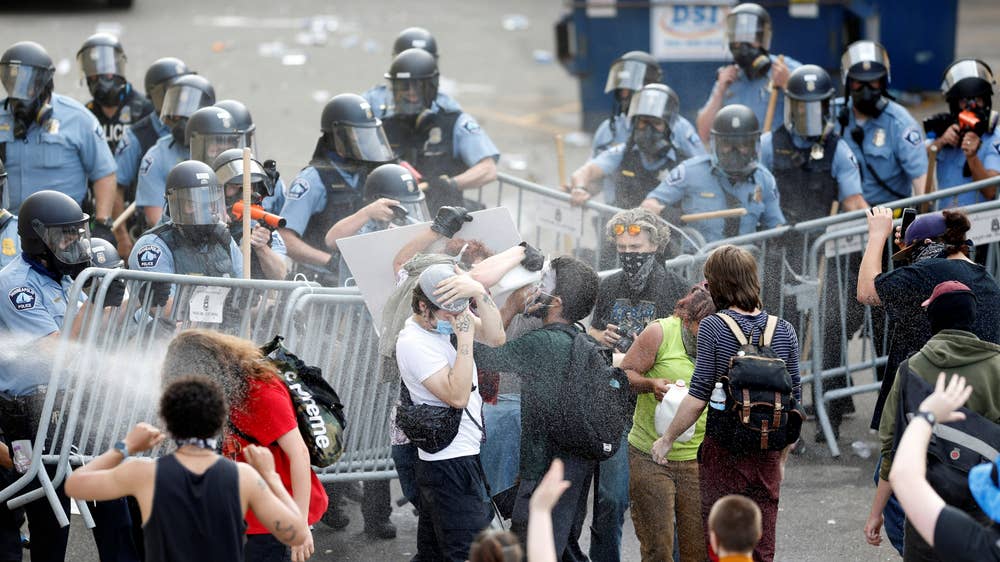

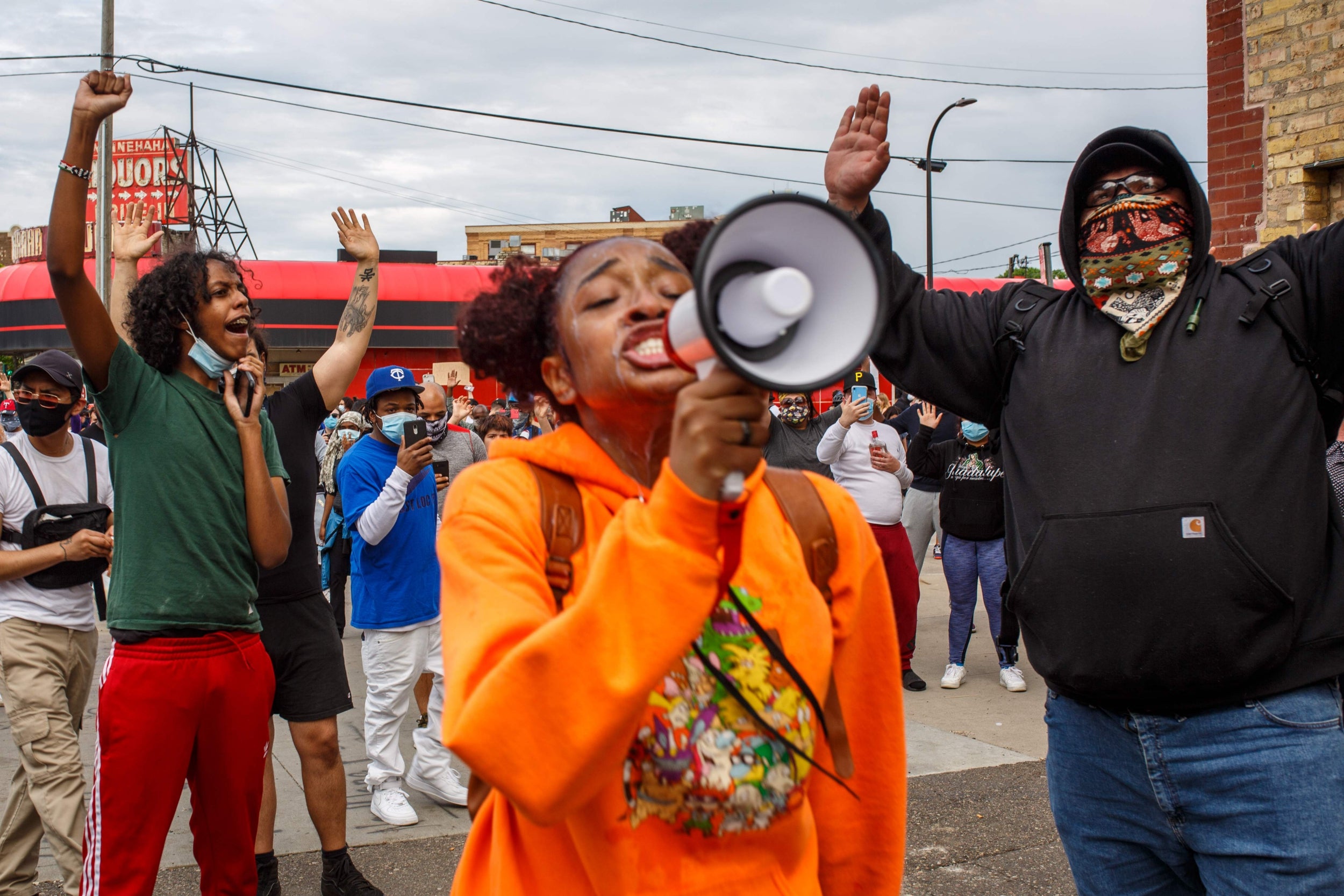
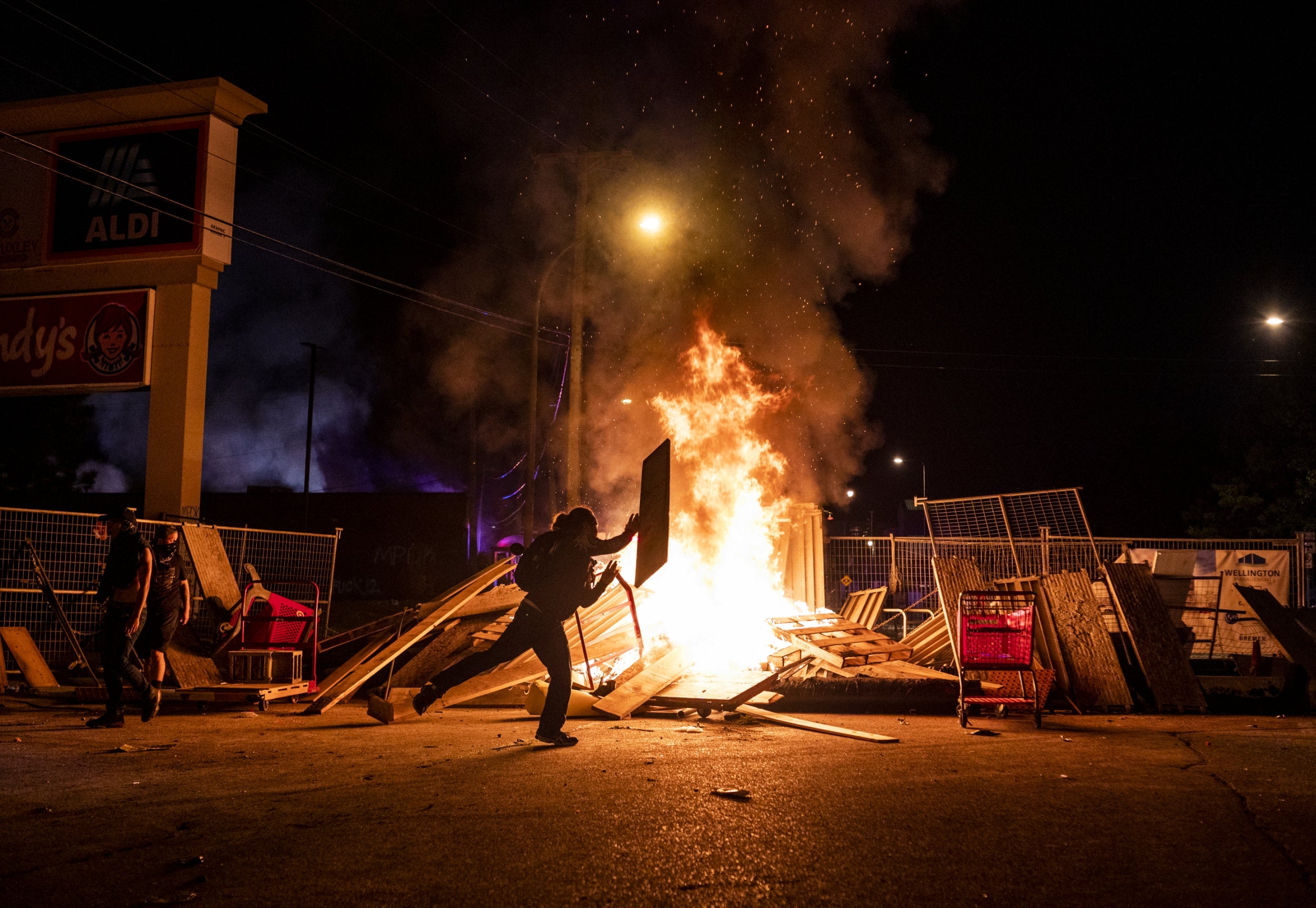
“None of us are anarchists, as we’re trying to use legislative processes to change the mayor’s narrative for our community. We’re attempting to gain equity. We don’t have guns. There’s very few people who are utilising their second amendment rights.”
The death in police custody last month of Floyd, 46, an unarmed African American man, has sparked protests, most of them overwhelmingly peaceful, across the nation and around the world.
Four police officers involved in the arrest of Floyd were fired from the Minneapolis Police Department. One was charged with second degree murder, while the others with aiding his death.
Meanwhile, as communities across America have tried to reform their police departments and make them truly answerable to the police they are supposed to serve, Mr Trump has sought to project himself as being the “law and order president”. Having been criticised for suggesting Floyd might be looking down haply from heaven at recent employment numbers, the president has also gone head to head with mayors and governors he believes are being to soft on protesters.
Among those he attacked was Washington state governor Jay Inslee, and Seattle mayor Jenny Durkan, both Democrats. Two weeks ago, a peaceful protest in the centre of Seattle turned violent and more than 50 people were arrested after damage was done to a series of buildings.
The mayor imposed a curfew and then proceeded to work with police and community leaders to try and secure calm.
More recently, Ms Durkan told the city police chief, Carmen Best, an African American woman, to withdraw uniformed officers from the so-called East Precinct, which covers Capitol Hill, a rapidly gentrifying neighbourhood known for its buzzy bars and nightlife.
Thus was born Capitol Hill Autonomous Zone, (CHAZ), a cross between a sit-in, a protest and summer festival. The zone claims to have no direct leaders, although it has a website.
In recent days, protesters have been organising teach-ins, and showing Ava DuVernay’s 13th, a 2016 documentary that explores the history of race relations in the US, and takes its name from 13th amendment to the constitution, which abolished slavery.
“Radical Left Governor @JayInslee and the Mayor of Seattle are being taunted and played at a level that our great Country has never seen before. Take back your city NOW. If you don’t do it, I will. This is not a game. These ugly Anarchists must be stopped IMMEDIATELY. MOVE FAST,” Mr Trump had tweeted.
George Floyd’s brother testifies at US Committee and asks for law enforcement to be the solution, not the problem
Ms Durkan was quick to respond. “Make us all safe. Go back to your bunker,” she said.
A spokesperson for Mr Inslee told The Independent of Mr Trump’s comments: “The president’s claims, as usual, are false.”
Felisha Tyson, a personal trainer, said she been struck by the number of white people who were at the protest, and said it had started to “feel like a block party”.
Yet she said people of colour had a number of white allies in Seattle, just as there were white people who choose to look the other way. “There are going to be a lot of new organisers working in the days ahead,” she said.
Her friend, Ronelle Wheeler, said the city and state had a long history of racism. Yet many people acted as though they were not impacted by it, or its consequences
Ms Tyson added: “My dad and my uncle tell me crazy stories from the Seventies, with police brutality by the Seattle Police Department.”
Silas Korvjund-Zacharov, 23, a metal worker, was sitting outside a tent close to a community garden that had been established in the ground of park.
He was white, and wanted to show his solidarity with the protesters, he said.
Asked about the president’s description of the protesters as anarchists, he said: “My problem with that is anarchy means chaos, are we creating chaos here or are we creating more of a sense of unity.”
He added: “Unfortunately, Donald Trump is one of the biggest morons I’ve ever heard of. He does not know the proper definitions of most things he says. Anarchy is chaos. What we are here trying to do is promote equality and unity in the community.”
